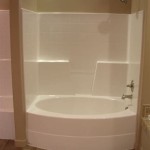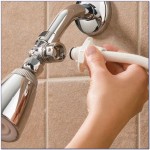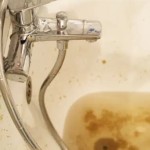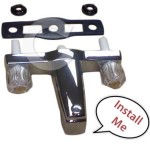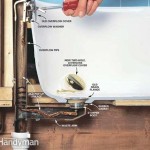Replacement Parts for Bathtub Faucet: A Comprehensive Guide
Bathtub faucets, while often overlooked, are essential components of a functioning and enjoyable bathroom. Over time, wear and tear can lead to leaks, drips, and reduced water pressure, necessitating the replacement of specific faucet parts. Understanding the different components of a bathtub faucet, identifying common issues, and knowing the available replacement parts are crucial for maintaining a well-functioning plumbing system and preventing costly water damage.
This article provides a comprehensive guide to replacement parts for bathtub faucets, covering various faucet types, common problems, and the specific components that may need replacing. It also offers information on diagnosing faucet issues and selecting the appropriate replacement parts.
Understanding Bathtub Faucet Types
Bathtub faucets come in various configurations, each with its own set of replacement parts and troubleshooting considerations. Recognizing the type of faucet is the first step in identifying the appropriate replacement components.
Compression Faucets: These are the oldest and most common type, characterized by two separate handles for hot and cold water. They operate using a stem mechanism with a rubber or neoprene washer that seals against a valve seat to stop the flow of water. When either handle is turned to the ‘off’ position, the stem is pressed down closing the valve. The washer wears down over time and is a common cause for leaks in compression faucets.
Ball Faucets: These faucets, often found in kitchen sinks as well, use a single handle to control both water temperature and flow. Inside the faucet body is a slotted ball that controls the mixing of hot and cold water. The position of the handle dictates how much of which water is dispensed. These faucets have a cartridge that contains internal seals and springs that can wear with use. Ball faucets tend to be more intricate than compression faucets, with more parts to maintain.
Cartridge Faucets: Similar to ball faucets, cartridge faucets use a single handle to control water temperature and flow. However, instead of a ball, they use a cylindrical cartridge that slides up and down and rotates to mix water. Cartridge faucets are known for their smooth operation and relatively easy repair. The cartridge itself is usually the part that needs replacing, which often improves both water flow and helps stop drips.
Ceramic Disc Faucets: These are considered the most modern and durable type. They feature a single handle that controls water flow and temperature through the movement of two ceramic discs. These discs come together to restrict or allow water flow. Ceramic disc faucets are known for their drip-free performance and long lifespan. While components are more durable, mineral buildup and hard water can affect the ceramic disc. Replacement of the disc isn't always possible; sometimes the full faucet must be changed.
Diverter Faucets: These faucets are specifically designed for bathtubs with showers. They incorporate a diverter valve that allows the user to switch the water flow between the bathtub spout and the showerhead. The diverter valve is a key component specific to this type of faucet, in addition to the standard valve stems or cartridges. They can be separate, usually a pull-up diverter, or integrated into the faucet control.
Common Bathtub Faucet Problems and Corresponding Replacement Parts
Identifying the specific problem with the bathtub faucet is crucial for determining which replacement part is needed. Here's a breakdown of typical issues and the corresponding parts:
Dripping Faucet: This is one of the most common issues. In compression faucets, the culprit is usually a worn-out valve stem washer. Replacing the washer is a relatively simple and inexpensive repair. For ball, cartridge, and ceramic disc faucets, the problem could be a worn-out O-ring, seal, or the cartridge itself. In these cases, replacing the entire cartridge is often the easiest and most effective solution.
Leaking Spout: A leak that occurs at the base of the spout where it connects to the wall or tub deck could indicate a worn-out O-ring or rubber seal. Replacing these seals will usually resolve the issue. Ensure the right size and material are used for a water-tight seal. Also, check the spout itself for cracks or corrosion, which may necessitate replacing the entire spout.
Reduced Water Pressure: Reduced water pressure can result from mineral buildup or debris obstructing the aerator (if equipped) or within the faucet's internal components. Disassembling and cleaning the faucet, including the aerator and any internal screens or filters, can often restore water pressure. If cleaning doesn't help, the cartridge or valve stem may be restricted and needs replacement.
Stiff or Difficult-to-Turn Handles: Stiff handles usually indicate corrosion or mineral buildup within the faucet body or on the valve stem. Disassembling the faucet, cleaning the affected parts with a limescale remover, and applying plumber's grease to the stem threads can often alleviate the stiffness. If the stem is severely corroded or damaged, replacement is necessary.
Faulty Diverter Valve: If the diverter valve isn't effectively switching water flow between the tub spout and showerhead, the diverter valve itself may be worn or damaged. Replacement of the diverter valve is typically required. There can be multiple points for issues, so careful inspection of the entire diverter assembly is required.
Specific Bathtub Faucet Replacement Parts
Having a detailed understanding of the various replacement parts available will simplify the repair process. Some common replacement parts are:
Valve Stems (Compression Faucets): These are the central components in compression faucets. They control the flow of water and are connected to the handles. Valve stems can wear out over time, leading to leaks and stiff handles. When replacing valve stems, it's crucial to match the thread size and length to the original stem.
Valve Stem Washers (Compression Faucets): These are the small rubber or neoprene washers that seal against the valve seat, preventing water from leaking. These are inexpensive and easy to replace, but the correct size and material are important. A common mistake is to overtighten the valve after replacing the washers, ruining the new washer.
O-Rings and Seals: O-rings and seals are used in various parts of the faucet to create watertight connections, particularly around the spout and handles. They come in various sizes and materials, and selecting the correct replacement is essential to prevent leaks. Using silicone grease during installation can help ensure a good seal and prolong the lifespan of the O-rings.
Cartridges (Ball, Cartridge, and Ceramic Disc Faucets): Cartridges are self-contained units that control water flow and temperature in single-handle faucets. Replacing the entire cartridge is often the easiest way to fix leaks or water pressure issues. Cartridges are specific to the faucet model, so it's important to identify the correct replacement cartridge.
Handles: Faucet handles can become damaged or corroded over time. Replacement handles are available in various styles and finishes to match the existing bathroom décor. When replacing handles, ensure that the new handle is compatible with the existing faucet stem or cartridge.
Spouts: Bathtub spouts can develop leaks or corrosion over time. Replacement spouts are available in various lengths and styles, including diverter spouts. When replacing a spout, ensure that it matches the thread size and connection type of the existing plumbing. Applying plumber's tape to the threads before installation can help ensure a watertight seal.
Diverter Valves: As previously stated, diverter valves are specific to bathtubs with showers. If the diverter valve fails to properly redirect water flow, it needs to be replaced. Diverter valves can come in many different configurations, so it's important to identify the correct replacement valve.
Aerators: Aerators are found on some bathtub spouts. They mix air with the water to create a more consistent flow and reduce splashing. Aerators often get clogged with mineral deposits. They can either be cleaned or replaced.
Diagnosing Faucet Problems and Selecting the Right Replacement Parts
Before purchasing replacement parts, it's essential to accurately diagnose the problem and identify the specific parts that need replacing. This involves a systematic approach:
Identify the Faucet Type: Determine whether the faucet is a compression, ball, cartridge, or ceramic disc faucet, as this will narrow down the possible causes of the problem. Knowing the brand and model of the faucet will further aid in identifying the correct replacement parts.
Observe the Symptoms: Carefully observe the faucet's behavior. Is it dripping, leaking from the spout, exhibiting reduced water pressure, or have stiff handles? Note the specific symptoms to help pinpoint the faulty components.
Disassemble the Faucet: Carefully disassemble the faucet, following the manufacturer's instructions or online tutorials. Take pictures as you disassemble the faucet to assist with reassembly. Examine each component for signs of wear, corrosion, or damage.
Identify the Faulty Parts: Based on the observed symptoms and the examination of the faucet components, identify the specific parts that are causing the problem. For example, a dripping compression faucet likely has a worn-out valve stem washer.
Obtain Replacement Parts: Take the old parts to a hardware store or plumbing supply store to ensure proper fit and compatibility. Alternatively, search for replacement parts online using the faucet's model number or the part's dimensions. Consider purchasing high-quality replacement parts from reputable manufacturers to ensure durability and longevity.
Consider a Faucet Replacement: In some instances, particularly with older or heavily damaged faucets, it may be more cost-effective to replace the entire faucet rather than attempting to repair it. New faucets offer improved performance, water efficiency, and updated aesthetics.
Safety Measures: Before beginning any work on the faucet, shut off the water supply to the bathtub. This will prevent water from flowing out of the faucet when it is disassembled. Place a towel or cloth in the bathtub to protect the finish from scratches. Also, be sure to have the proper tools on-hand before starting the repair.
By following these steps, homeowners can effectively diagnose bathtub faucet problems and select the appropriate replacement parts, ensuring a successful repair and preventing further water damage.

How To Fix A Leaking Bathtub Faucet Diy Family Handyman

How To Fix A Leaking Bathtub Faucet Diy Family Handyman

Bath Tub Spouts The Largest Selection Of On Web

The Diffe Parts Of A Bathtub And How They Work Family Handyman

Valley Single Handle Shower Replacement Parts
Shower Valve Types 101 How To Choose The Right Vevano

Valley Back To Tub Shower Replacement Parts

20 Parts Of Bathroom Sink Drain

Valley Two Handle Bathroom Faucet Repair Parts

Repair Parts For One And Two Handle Delta Bathroom Faucets
Related Posts



